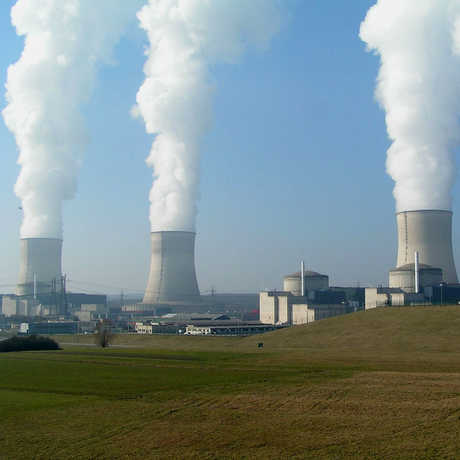Some synthetic materials like polyester fabric are not great for the environment in that they can take a long time to degrade in landfills after they are thrown away. But what is the environmental impact of producing these synthetics, compared to more natural materials?
Teacher Prep
The figures in this activity come from the Ecological Footprint and Water Analysis of Cotton, Hemp, and Polyester report by Cherrett et al. In this activity, students will be learning about ecological footprints. The WWF defines 'ecological footprint' as the impact of human activities measured in terms of the area of biologically productive land and water required (often reported in global hectares) to produce the goods consumed and to assimilate the wastes generated. More simply, it is the amount of the environment necessary to produce the goods and services necessary to support a particular lifestyle.
Analyzing and Interpreting Data Activity
1. Write the following Focus Question on the board: How does the environmental footprint of producing natural fibers, like cotton, compare to the environmental footprint of producing synthetic fibers, like polyester?
2. Review the concept of a 'supply chain' with your students. See Visual 1 from this lesson by the Council for Economic Education.
3. As a class, think about how cotton and polyester clothes are made. What are the raw materials? Where do they come from? How are they transformed into clothing? What resources are needed for this transformation (e.g. land, water, energy, etc.)? Make a list of brainstormed processes and resources on the board.
4. Have students write in their science notebooks whether they think cotton or polyester is more environmentally-friendly to produce, and why.
5. Hand out a set of Ecological Footprint Figures to each pair of students. Each student should individually spend about 3-5 minutes analyzing each of the Figures and writing down observations in their notebooks.
Here are some questions you can write on the board to help your students analyze and interpret the information in the Figures:
- What do the bars on the graph represent? What information are they telling you? What do the different colors on the graph represent?
- What is the variable on the y-axis? What information is on the x-axis?
- What are some observations you can make from the graph? What are some interpretations you can make? What is the difference between an observation and an interpretation?
6. With their partner, students should spend about 10 minutes discussing what they learned from the Figures and deciding together what their answer to the Focus Question is and why.
7. Ask students to share their answers to the Focus Question. Then, hand out an Overall Ecological Footprint Figure to each pair and lead a class discussion on the environmental footprints of synthetic vs. natural materials.
- What do you notice/observe about this figure?
- Why do you think the overall Ecological Footprints of these fibers are expressed in global hectares?
- What other factors are considered in the overall ecological footprint other than carbon emissions and energy requirements?
- Which fibers have a smaller overall ecological footprint? Why do you think this is?
- How does the fiber production compare to the crop cultivation for various fibers in terms of their environmental footprint?
- Are there any fibers that had low CO2 emissions or energy requirements but large ecological footprints?
Extension: Hand out copies of the figures on page 17 of the report, and have your students explore in more detail the ecological footprint of each step involved in the production of cotton and hemp (the supply chains).


